Records showed that in the 11th Century BC, Spain was inhabited by Phoenicians traders and subsequently by the Greeks and Romans. Spain was the Roman province of Espania. After the fall of Rome, the Visigoths occupied the country until 711 AD, when Spain became one of the few Arab Muslim countries in Europe. However by the 15th Century, Arab power began to wane. In 1487, the Catholics monarchs, Isabella and Ferdinand reoccupied much of Moorish Spain.
Grenada 19 Sep 2007
The last to fall was Granada in Jan 1492. In fact Isabella was so ecstatic that she had reunited all of Spain with the successful siege of Granada, that she sent word that day to Christopher Columbus that she would support his westward enterprise.
The Moors were tolerant of other religions. In the 8 centuries of Muslim rule, the Jews, Christians and Muslims lived in harmony. At the centre courtyard of the Alhambra is a gift fountain from the Jewish community, a large circular fount, was supported by 12 marble lions symbolising the 12 tribes of Israel.
The Alhambra was built for the last Caliphate who fled to Granada after the fall of Cordoba and thrived there as the last Islamic bastion of western Europe for another 200 years. The complex which was built on the Sabika hill became home to the Nasrid Sultans. It has 4 groups of buildings the Alcazaba which is the fortress, the Palacios Nazaríes, the Generalife Gardens and Medina, which are the servants' quarters. The Nasrid Palaces are a series of the most impressive buildings and courtyards that are not imposing nor opulent but subtle in beauty.
The walls of the rooms are decorated with intricate Arabic motifs made of stucco. Every 2 small decorations required a mold. These pieces are then put together to cover the walls and ceilings. The colours and patterns make the rooms pleasing; all together a different art form. It is no wonder that the Alhambra is the most often visited tourist attraction in Spain. We were told that from 1 Apr to 31 Oct every year, the 7000 tickets for admission daily are all sold out. If one desires to visit the Alhambra it is best to reserve your entry tickets through the Internet and choose the appropriate entry times to the palace
Cordoba 20 Sep 2007.
We arrived in Cordoba after a long drive through farms with olive groves on both sides of the A 45 highway.But all of the inner and old city of Cordoba transported us into another time when it served as capital to Islamic Spain. Narrow zig zagging streets are lined by small white shops and cafes interspersed with churches of all sizes.
Then one enters the 'Mezquita – Cathedral’ and one is moved to another plane of experience; the most fascinating church building that I have ever entered in all my travels. This building has 856 columns all with Corinthian capitals supporting unique 'Islamic' arches. The Mezquita was noted to be the most beautiful and largest mosque outside the Middle East. It is now a cathedral renovated from the original mosgue in the 15th Century.
Despite the claim to be tolerant of all religion, the mosque was built in 785 AD over the former Basilica of St Vicente. This was a celebration of the Islamic conquest of Córdoba by Abd-ar-Rahman I. It was later enlarged by several of his successors. It was a very elegant building and the most impressive is the the most impressive is the Mihrab from where the Imam would lead in prayer.
In 1236 the King Ferdinand lll recaptured Cordoba. The Christians then turned the mosque into a cathedral but cleverly kept the unique architecture of the former mosque as its side rows of aisles. The main chapel of Villaviciosa was erected under the Al-Hakim ll skylight and the cathedral was consecrated on Pat's birthday of 18 May in 1236. The main high chapels, choir stalls and transept are very imposing. The Christian high altar was built in the centre of the complex whilst the small chapels to the side under the Muslim arches.
rab from where the Imam would lead in prayer. The gold inlay and Islamic artistic motif and letterings provided a multi-coloured sight to behold.
Málaga 18 Sep 07.
Málaga is a port city in Andalusia, southern Spain, on the Costa del Sol coast of the Mediterranean. The Alcazaba de Málaga was a Moorish palace-citadel complex built in the middle of the 11th Century. The fortress built on high ground, overlooking and guarding the port of Malaga. As with most Islamic palaces, it is tastefully done without being ostentatious. The arches were more delicately built and not of the heavy masonry style of the gothic and baroque cathedrals in most of Europe.
In their heydays, they must have been less intimidating to look at, yet very impressive. Do you realise that Islamic styled fountains are small, simple and placed at floor level or on a low pedestal? The paths themselves are paved with stones forming geometrical patterns. At one stretch, water from the fountains is channelled through a small central drain and the sound produced is that of a rippling brook.
The rooms appear very cool and airy by clever positioning and management of air flow. The pathways meander up through landscaped gardens that include a number of very ornate fountains.The Nazari Palace has 3 courtyards leading to 2 airy and spacious rooms one with 16th Century carved wooden ceiling and the other with lovely original marble columns.
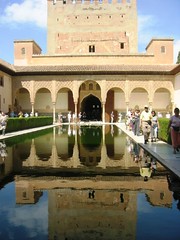

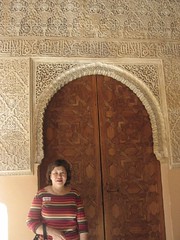
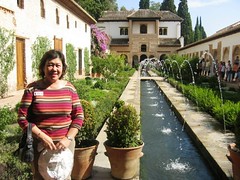

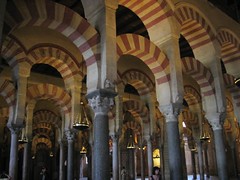
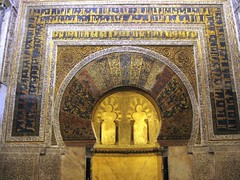

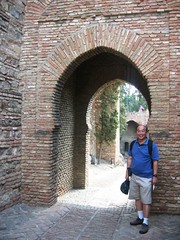

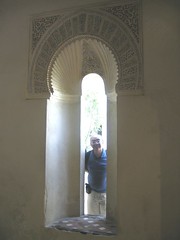
No comments:
Post a Comment